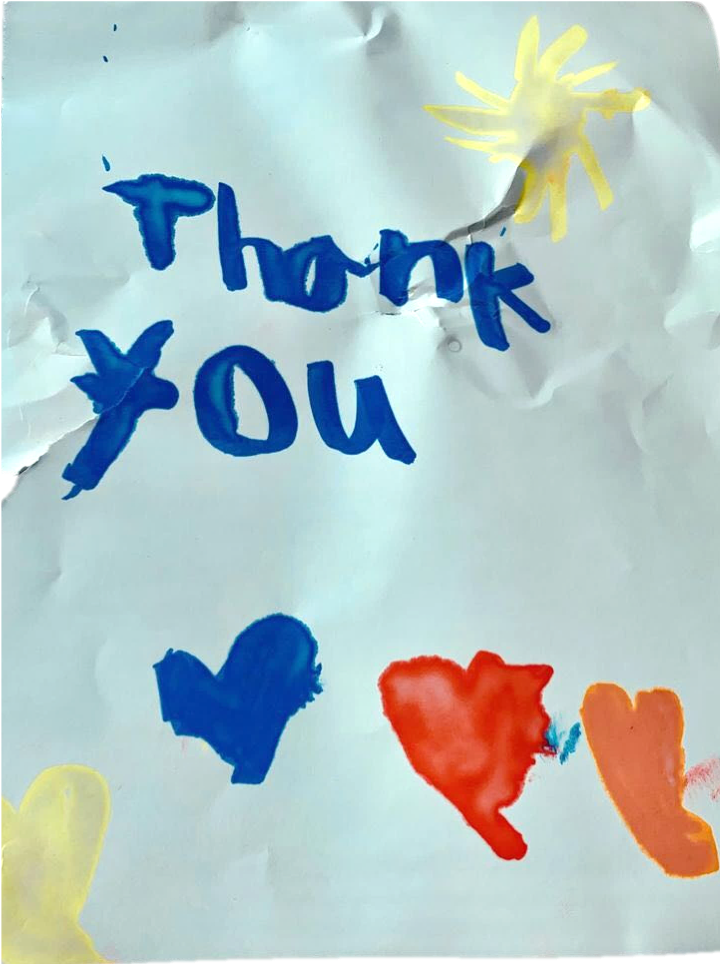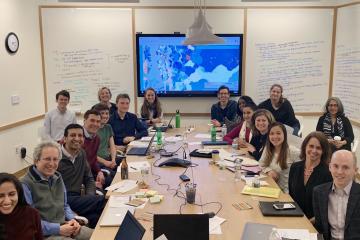
Building research partnerships to create moves to opportunity

Raj Chetty is the William A. Ackman Professor of Public Economics at Harvard University and a J-PAL affiliated researcher. Chetty was one of the Principal Investigators for the Creating Moves to Opportunity (CMTO) project, an ongoing collaboration between J-PAL-affiliated researchers and public housing authorities to introduce and evaluate interventions to “create moves to opportunity” for low-income families.
Chetty is also the Director of Opportunity Insights, a research center based at Harvard University, with the mission to identify solutions to help more children rise out of poverty and achieve better life outcomes in the United States. In response to COVID-19, Chetty and the Opportunity Insights Team developed The Opportunity Insights Economic Tracker, a publicly available platform that tracks real time economic activity at a granular level using anonymized private sector data. Using data from the tracker, Opportunity Insights researchers have outlined key insights on household spending patterns, the impact of policy efforts to date, as well as long-term solutions to the current economic crisis.
CMTO beginnings
Often as a researcher, you have an idea about something that can make a difference in the world. One such idea emerged from observational data we were collecting at Opportunity Insights. The data showed how children’s chances of rising up out of poverty varied sharply across different neighborhoods in Seattle. Yet we also noticed that, in spite of receiving housing vouchers (governmental rental assistance worth about $1,500 a month), low-income families tended to live in low-opportunity areas where poverty was likely to persist across generations.
This led us to the question: Why did low-income families tend to be segregated into low-opportunity areas where their kids are unlikely to escape poverty? Did they not want to live in other parts of Seattle that might be further away from their families or jobs and were perfectly happy to live where they resided? Or did they face barriers—like complicated housing voucher inspection processes and regulations, or lack of information and assistance in the housing search process—that prevented them from moving to higher upward mobility areas?
Answering these questions could help figure out how to get lower-income families to move to higher-opportunity areas, which could have a transformational impact on the lives of the children from these families. So we designed a simple intervention called the Creating Moves to Opportunity (CMTO) pilot that provided a set of services to families who applied for housing vouchers in Seattle. Through the CMTO pilot, randomly selected households were paired with a housing navigator to help them throughout the search process, connect them to landlords, and provide a small amount of financial assistance at critical points in the process.
Partnering with J-PAL North America
The challenge in turning this sort of idea into a study, especially for an individual researcher, is that it takes an enormous amount of work—work that often falls outside of the traditional domain of scientific research. In order to carry out a study to measure the pilot’s impact on the lives of families on the ground, it was critical for us to identify the right partners with the expertise and experience necessary to bring the idea to fruition.
Given its reputation, J-PAL quickly rose to the top of the list of potential partners. The number of studies we've seen come out of J-PAL have been some of the most important randomized evaluations in social science. We look to J-PAL for top-quality execution and for high fidelity in that execution. There are many logistical issues and challenges that researchers might not anticipate, and running an experiment in the real world requires specialized tools and juggling a lot of moving parts. J-PAL complements the technical expertise of researchers by working through such hurdles to actually create change in the field.
For the CMTO project, success also depended on our ability to work collaboratively not only with other academics, but also with people who were doing this work on the ground. J-PAL North America helped us determine that Public Housing Authorities (PHAs) were best placed to pilot the CMTO intervention and test them early on. Partnering with PHAs was what ultimately allowed us to test timely and policy-relevant questions related to housing.
We also needed to ensure that, throughout the project, all stakeholders were given a voice. This included housing authority staff who had spent their lives thinking about these issues, tenants who were actually seeking to make these moves, and landlords who faced various concerns themselves. J-PAL North America helped bring all of these groups together to have a constructive dialogue on how to design a program that could have the greatest impact.
Additionally, when you're doing an experiment of this scale, it typically takes several years from planning to implementation to see results. This requires keeping track of compliance with local regulations, meeting diverse stakeholder needs, and taking all the necessary steps to launch the study. J-PAL North America provided added capacity during critical phases of project development and management to oversee these details and ensure all stakeholders were coordinated in our execution. And with a foot in both the policy door and the academic door, J-PAL North America staff also served as a helpful resource in translating between researchers and practitioners.
Through our partnership with J-PAL North America, we went from an idea discussed in our offices, to ultimately visiting Seattle and meeting families who had moved to these different neighborhoods. And the most poignant moment during all of this was receiving a thank you card from a seven-year-old child who felt that her life had been transformed as a result of this pilot study.
Learning from preliminary results
The initial data from phase one of the study showed that the CMTO pilot really changed where families choose to live. In the first year of the study, we found that families who received the additional support services in the pilot were much more likely to move to high-opportunity areas. The rate of families moving to high opportunity places increased from fourteen percent in the control group to 55 percent in the treatment group. The majority of the children whose families participated in the pilot are now growing up in places where we estimate that they will go on to earn an average of $200,000 or more over their lifetimes as a result of this intervention.
To me, the data also gave a positive message about the world. It told us that segregation in America and many other countries is not the result of deep-rooted preferences that landlords or tenants hold, but rather barriers that can be overcome through changes in policy.
In phase two of the study, we are attempting to understand the mechanisms through which phase one had such a great impact. We want to understand, in greater detail, exactly why that bundle of interventions was so successful. We will also determine how we can optimize the program to reduce costs so we can make the program available to more families throughout the United States.
The case for more evidence—and the research partnerships that generate it
Evidence can play a pivotal role in reshaping policy debates. Political discourse often tends towards people's ideologies or prior convictions about what may or may not work. But when rigorous research brings evidence to bear on a politically charged issue, it can completely change the tenor of the conversation. As we’ve learned from CMTO, evidence can shift the focus from “What do I think is most important based on my initial beliefs?” to “What does the research show is best for our kids?”
Rigorous research results can bring people from different backgrounds together, cut through debates, and make real progress. This is the power of evidence, and the power of collaborative research partnerships that can help us put evidence into action.



